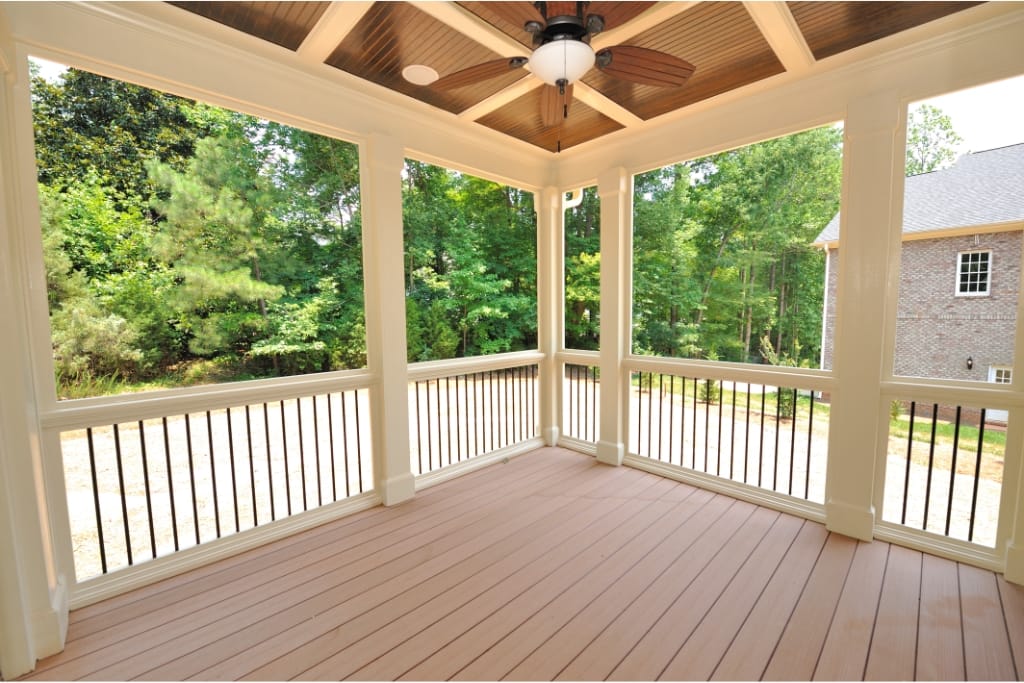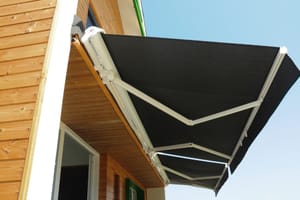Selecting the right awning for your space can significantly enhance both the aesthetics and functionality of your outdoor area.
Whether you're aiming to create a cozy, shaded retreat or extend your living space, an awning can provide the perfect solution.
However, with a plethora of options available, making the ideal choice requires careful consideration of several key factors.
From material type and durability to design and budget, understanding these elements will empower you to make an informed decision.
Let's explore the six crucial factors to consider, ensuring that your chosen awning complements your lifestyle and meets your specific needs.
1)) Material Durability
When choosing an awning, material durability is a critical factor that can influence its longevity and performance.
The materials commonly used for awnings range from acrylic and polyester to canvas and metal, each offering unique benefits.
Acrylic is known for its excellent resistance to mold and fading, making it a popular choice for homes exposed to harsh sunlight.
Polyester, on the other hand, provides a lightweight, cost-effective option that still maintains resilience in various weather conditions.
Metal, such as aluminum, is often favored for its robust durability and low maintenance, ideal for areas with heavy rain or strong winds.
Canvas offers a traditional look and is appreciated for its aesthetic appeal, although it may require more upkeep.
Selecting a durable material ensures that your awning can withstand the elements while maintaining its functionality and appearance over time.
By taking into account the specific conditions your awning will face, you can choose a material that not only matches the area's climate but also aligns with your style and investment goals.
2)) Climate Compatibility
Understanding climate compatibility is essential when selecting an awning, as it ensures the awning's longevity and effectiveness in providing shelter.
In regions with intense sunlight, a UV-resistant fabric can prevent fading and degradation, enhancing the awning’s lifespan and efficiency in offering protection.
For areas prone to frequent rainfall, water-resistant materials are crucial to prevent damage and prolong use.
Considering wind load and structural stability is vital in locations that experience strong winds.
Awning designs with reinforced frames and durable fastenings can withstand such conditions without compromising safety or functionality.
By assessing the specific weather patterns typical to your area, you can choose an awning that not only survives but thrives in its environmental setting, providing peace of mind and long-lasting comfort.
3)) Design And Aesthetics
When choosing an awning, design, and aesthetics play a pivotal role in enhancing the visual appeal of your outdoor space.
The design you select should seamlessly integrate with the overall architecture of your property, complementing existing color schemes and structural styles.
Awnings come in a variety of shapes and configurations, from traditional retractable models to more modern, sleek silhouettes, allowing you to express your style.
Color choice is equally important, as it can set the mood for your space, ranging from vibrant and bold shades that make a statement to neutral tones that subtly blend with the environment.
Patterns such as stripes or plaids can add a touch of personality, making your awning a standout feature.
Balancing aesthetics with functionality ensures that the awning not only beautifies your setting but also serves its intended purpose effectively.
By carefully considering design elements, you can select an awning that not only enhances the attractiveness of your outdoor area but also elevates the overall ambiance, creating a perfect outdoor haven tailored to your taste and lifestyle.
4)) Functionality And Purpose
When selecting an awning, considering its functionality and purpose is crucial to ensure it meets your specific needs and enhances your outdoor living experience.
An awning can serve varied purposes, from providing shade and reducing indoor temperatures to enhancing outdoor entertainment areas or protecting against the elements.
If your primary goal is to create a comfortable, shaded area, opting for a model that offers adjustable angles might be beneficial to adapt to the changing sun position throughout the day.
For those focused on longevity and protection, a retractable awning can offer flexibility, allowing you to extend it fully during sunny or rainy weather and retract it during adverse conditions like strong winds to prevent damage.
Some awnings are even equipped with modern features such as motorized controls or built-in lighting, improving convenience and usability.
Evaluating what you hope to achieve with your awning ensures that it perfectly aligns with your lifestyle, providing enjoyment and practicality while seamlessly integrating into your space.
5)) Installation Complexity
Evaluating the installation complexity of an awning is an essential step in ensuring a smooth and successful setup process.
The level of difficulty involved can vary depending on the awning's type, size, and design features, as well as the installation location.
While some awnings come with straightforward installation mechanisms designed for DIY enthusiasts, others may require professional assistance due to more intricate components or mounting system requirements.
Considerations such as the structural integrity of the mounting surface, proper alignment, and securing of hardware are vital to maintaining the awning's longevity and safety.
Awareness of local building codes and permissions may play a role, especially for larger or more permanent installations.
By thoroughly assessing the installation requirements, you can better prepare, allocate resources efficiently, and avoid potential challenges, enjoying a hassle-free experience that brings your chosen awning to life.
6)) Maintenance Requirements
Ensuring the long-term efficacy and appeal of an awning requires understanding its maintenance requirements.
Proper maintenance can extend an awning's life, preserving both its functionality and aesthetics.
Regular cleaning is fundamental, as dirt, debris, and environmental pollutants can accumulate on the awning fabric, potentially causing stains or degradation.
It is beneficial to use mild cleaning solutions and soft cloths to avoid damaging the material.
The structural components should be inspected periodically for signs of wear or rust, particularly for metal frames and fixtures.
Lubricating movable parts, such as hinges and pivots, can help maintain smooth operation and prevent unnecessary strain.
If your awning is retractable, ensure the motor and control systems function correctly, addressing any issues promptly to avoid costly repairs.
By adhering to a routine maintenance schedule, you can prevent minor issues from developing into larger problems, ensuring your awning remains a durable and attractive feature in your outdoor space.
Conclusion
Selecting the perfect awning for your outdoor space involves balancing aesthetics, functionality, ease of installation, and maintenance requirements to suit your specific lifestyle and environmental conditions.
By carefully considering design aspects, you ensure a seamless integration with your property’s architecture, creating a visually pleasing outdoor retreat.
Focusing on functionality allows you to choose an awning that not only meets your shading and weather protection needs but also enhances your outdoor living experience.
Addressing installation complexity helps in anticipating any challenges, and facilitating a smooth setup.
Meanwhile, understanding maintenance needs can preserve the awning’s look and operation for years to come.
A well-chosen awning transforms your exterior environment into a harmonious extension of your home, offering comfort, style, and enduring beauty.
Download Our Free E-book!








